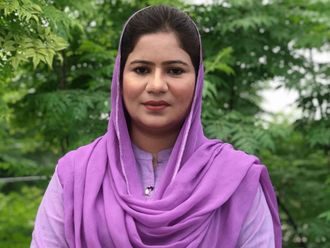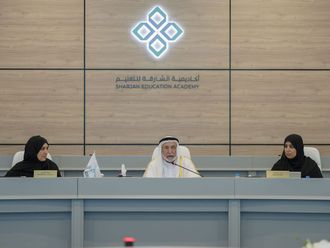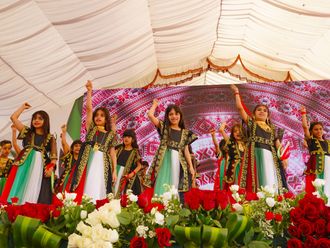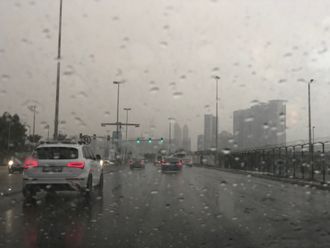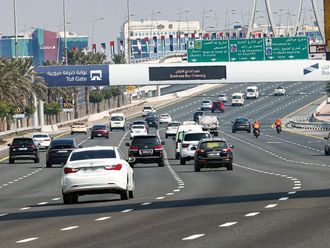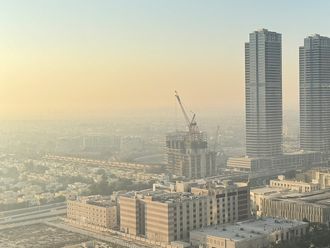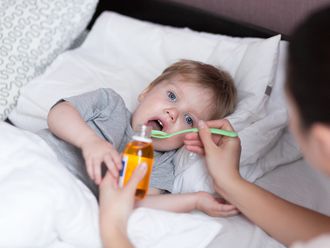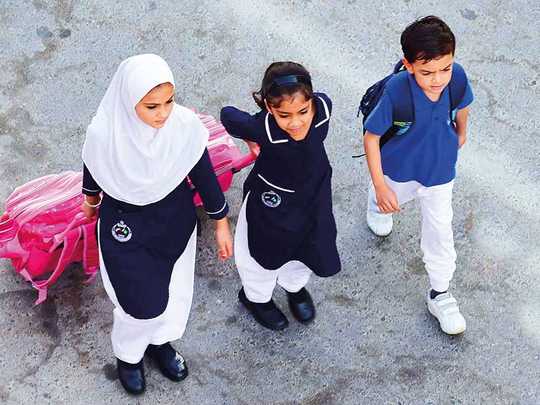
Dubai: The spiralling cost of school uniforms and accessories in private schools in the UAE is adding to the education budget of parents. Many parents believe that as private schools cannot raise school fees beyond a certain percentage each time a fee hike is in the offing, they have found a circuitous route to same end by placing exorbitant rates on school uniforms.
What’s more, it is mandatory for parents to purchase the uniforms from an outlet designated by the school, which in essence means that parents are left without a choice and have to comply with the rates, whatever they may be.
Going by recent surveys and reports on education in the UAE, there are a total of 735 schools in the country which include private and government schools and of these, 513 are run by private organisations.
With over 1.4 million students enrolled in schools, many of them in private schools, it is not difficult to imagine the percentage stake in uniform sales for schools.
Standardised prices
On the other hand, as a study in comparison, generic uniforms in government schools keep prices under control. Both the private and public schools run by the UAE government — by the Ministry of Education and the Abu Dhabi Education Company (Adec) — follow a federal policy of providing generic uniforms for each group throughout all schools across the country. Only the badge with either the MOE or Adec logo shows the name of the school.
The prices are standardised and uniforms can be purchased from a hypermarket like Carrefour too. Even if a child changes schools within the same group, the uniform remains the same. And uniforms typically cost not more than Dh120 for an entire set.
This however is not the case with privately owned schools, which insist on parents purchasing their children’s uniforms from only one source.
A senior academician from one of the privately owned school groups offered an explanation. “By allotting the sale of uniforms to a designated company, we ensure that in terms of colour, texture and finish, each child is dressed in a similar fashion. When students buy uniforms from different outlets, there is a difference in shade and quality and that reflects poorly on the school,” he said.
Though that sounds like a reasonable explanation parents, however, beg to differ.
Quality below expectations
“I pay a far higher price buying my son’s and daughter’s uniform from the designated outlet. A school shirt for my son and daughter that costs barely Dh50 at a non-designated outlet is sold for Dh150 a piece. This comes to Dh300 a pair and I end up spending Dh1,500 for each child,” said a mother of two.
“We are talking about the basic cost of uniforms in which I haven’t included books, bags, ties, belts, shoes and other accessories. What irks me is that despite paying such a steep price, [the quality of the uniform] at the designated outlets has fallen below expectations,” she added.
“The uniform, which had a good percentage of cotton previously, now has a high percentage of polyester making it very uncomfortable for my children who spend at least 10 hours in those clothes.
“If they charge a high price, the least one expects is to be provided with a decent quality [of cloth],” the mother of two said.
How much does it take to clothe your child in a school uniform?
Going by the current prices, it can be estimated that any parent with a student in a private school spends an average of Dh2,000-Dh3,000 on a set of school uniforms annually. One needs a core uniform, sportswear, swimwear, belts, shoes, ties, hair accessories for girls, scarves, winterwear such as school crest embossed blazer, jacket and even sweater in some cases, plus shoes of two types — for daily wear and sports. In addition, school bags and gym bags embossed with the school crest are optional.
Price illustration:
This is an average breakdown of prices based on a comparison of various online mock purchases. A random school year has been picked up.
For a Girl in year 3 you will need the following:
Core Uniform
1. A pair of shirts: Dh160 (Dh80 each)
2. Pair of skirts: Dh270 (Dh135 each)
3. Tie Dh55
4. Hair accessories (Hair band and ponytail band): Dh85
Swim wear
Two swim suits: Dh300
Sports wear
PE T-shirt (2): Dh250 (Dh125 each)
PE shorts (2): Dh250 (Dh125 each)
Legionnaire caps: Dh115
Baseball caps: Dh75
Winter wear:
Blazer: Dh350
Sweater: Dh145
Fleece jacket: Dh100
Additional:
House Colour PE T-shirts: Dh75 each
Sports shoes: Dh175
Regular shoes black: Dh160
Grand total: Dh2,565
It may be noted that this list does not include, school bags, tiffin boxes, water bottles, pencil boxes, books and other accessories and parents mentioned that most of the children required more than just a pair of shirts and skirts throughout the year as quality of uniforms has deteriorated and colours fade, and cloth begins to get threadbare after several washes.
Is there a financial benefit for schools?
While there is no evidence that private organisations profit from the orders placed with designated uniform companies, there is reason to believe that the company that is granted the tender for uniforms of a particular school shares a percentage of the profit with the company running the school.
This supposition was attested to by many textile traders from the Bur Dubai Souq Baniyan who have traditionally been supplying wholesale uniform fabric to schools, including to government schools.
Explaining how the system works, a senior manager in a textile firm who is contracted to provide uniforms, said: “Many years ago, the way things worked was that there would be the main manufacturer in Japan or Malaysia who produced the uniform fabric. Textile companies sourced it and sold it to outlets who applied for school uniform tenders. In earlier times, the quality of the fabric used in school uniforms was very good. It was normally 108 threads per square inch of the fabric with 65 per cent polyester thread and 35 per cent viscose thread.
“Now, schools have either created proxy companies that purchase, stitch and sell uniforms to circumvent the wholesaler or have granted the contract to one company through a tender system.”
Quality of fabric
He continued: “They directly purchase in bulk from manufacturers. The quality of the fabric is compromised — it has only 70-100 threads per square inch and the polyester-viscose combination is 70-30 or 80-20 as against the traditional 50-50 or 60-40. As a result, the fabric looks inferior and is more synthetic.”
Despite eliminating the middleman and contracting one company to do purchase in bulk, the cost-saving in the wholesale buying does not accrue to the parent who ends up paying three to eight times the base price.
A pair of trousers and shirt for a Ministry of Education or Adec school is priced at Dh80 whereas a similar pair at a private school costs the parent Dh250-300. This is just the basic price difference and the gap widens in private schools as one adds the cost of swimwear, sportswear, winter wear bags, shoes, accessories, etc. (see box).
Another textile trader explained: “It is simple: if a private group runs many schools and let’s assume it is making a modest profit of Dh10 per piece of uniform or clothing sold, imagine the amount it makes with an average of 3,000 students per school. Multiply that with the number of schools and the figure can be a significant amount, just through uniform sales.
What’s a thread count:
Thread count refers to the number of horizontal and vertical threads per square inch. Generally, the higher the thread count, the softer the fabric, and the more likely it will wear well-or even soften over time.


